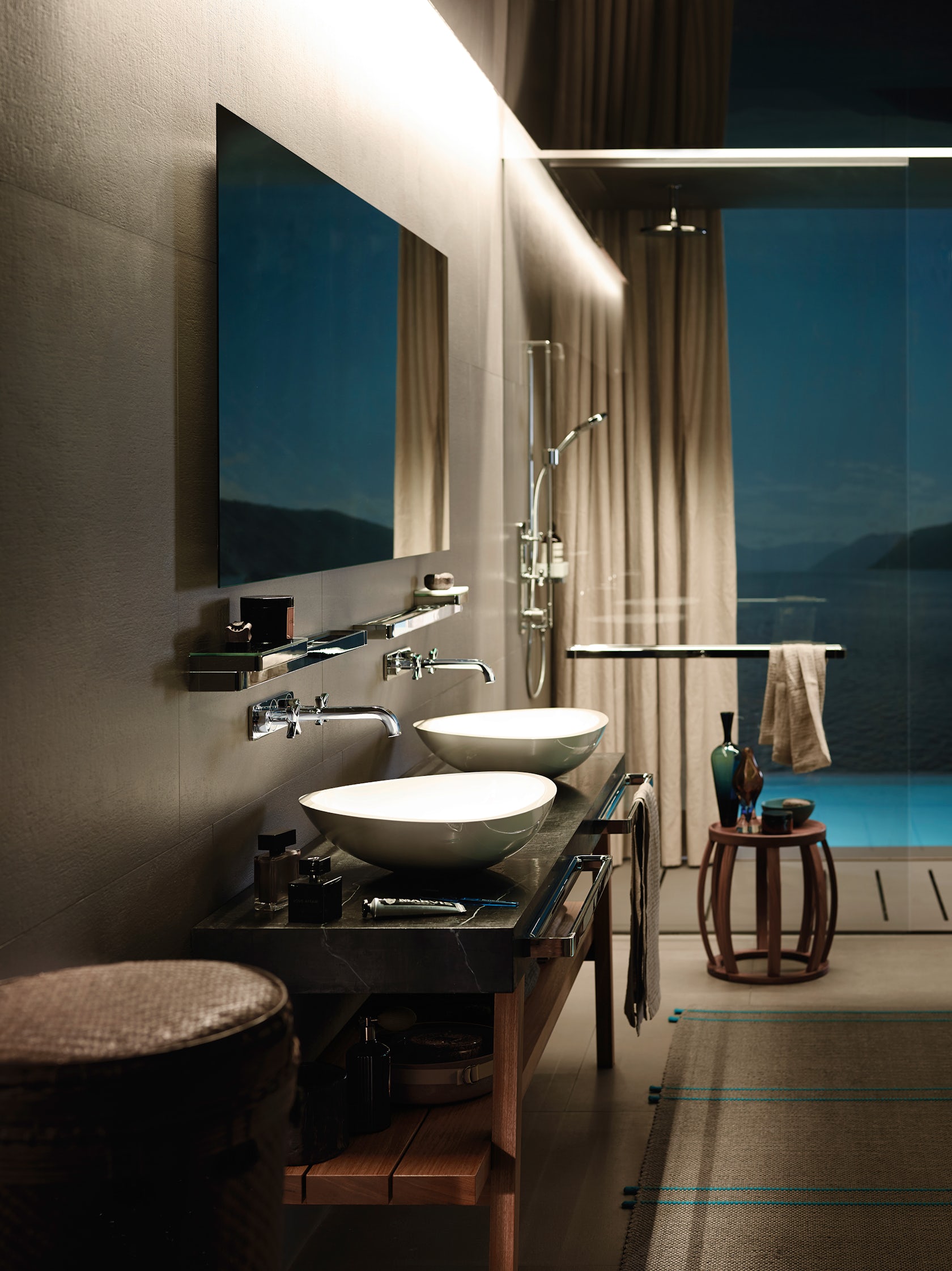Hansgrohe had firmly established itself as a pioneer in sanitary fittings by the time Philippe Grohe, grandson of company founder Hans Grohe, took the reins of its Axor brand in 2000. 72 years prior, for example, the enterprise had introduced consumers to the first hand shower, and its launch of Axor in 1992 marked a new era of manufacturer-designer collaborations in earnest.
Yet Philippe realized there was still room to innovate. While Axor had achieved widespread success by the time of Philippe’s arrival thanks to the contributions of its first design partners like Philippe Starck, Philippe decided to invest in additional voices. “Different designers represent different professional approaches and installation cultures. While we make a global product, it’s very interesting to tap these perspectives,” he says of his initiative. Philippe targeted a particular kind of voice, too: “We wanted someone who was not just working in products, but also interior design and architecture, because they identify solutions for spatial challenges that we, as component makers, do not see.”

© KUHNLE+KNOEDLER Fotodesign GmbH
Axor Citterio E faucets
Just as Philippe began his search for a multidisciplinary talent, one of the most celebrated polymaths in the creative world started looking for him. “I was working on two projects for which I really needed a complete collection of bath fittings and accessories, and I couldn’t find it,” recalls Italian design powerhouse Antonio Citterio. The Axor Starck collection had caught Citterio’s attention for its production quality, and he sought out Hansgrohe to equip him with this full suite of fittings and accessories. He and Philippe have been partners in design ever since.
Citterio takes issue with the notion that design deals only with surface. Of course, he says, one cannot neglect a product’s appearance, “But you have to think about a new program, or sometimes you are giving body to a new technology.” In the case of the Axor Citterio collection released three years after his introduction to Philippe, “My idea was that, normally, people believe that water comes out of a tube — and that a faucet can only be tubular in shape. But the reality is that a faucet contains tubes for cold and hot, and those two streams of water are mixed [by the thermostatic control]. So why do we need round faucets?” Although Axor Citterio avoids knifelike edges for user comfort, the designer says its overall linear expression has a monumentality that conveys the value of water.

Axor Citterio E thermostatic trim
Indeed, the marketplace lacked a rectangular faucet, Philippe concurs, though he explains that production challenges created this gap as much as popular perception about water’s flow. “On a square, flat surface, you perceive imperfections in the finish much more sharply than on a cylinder,” he explains. Axor Citterio, then, required setting new criteria for buffing and polishing on the production line. While the washbasin mixer was the most expensive in its category at the time, consumers in turn perceived a value in the design that has made it a consistent bestseller.
“A first project is always very interesting,” Philippe notes. “Because our design partner generally doesn’t know our limitations, he’s going to ask for the moon. Typically, the first project is a challenge, while the second project builds up efficiency.”
Citterio and Philippe have enjoyed more than one second time around. The relationship culminated again in 2006, with Axor Citterio M. If Citterio’s original geometries appealed to the intellect, by creating a tangible point and counterpoint between water and hardware, then the M collection, he says, “really reduced to the tube. I want to keep the perception of quality, but, in the end, I really want something much smoother and easier to use.”

Sketches of Axor Citterio E by Antonio Citterio
More recently, this dynamic duo came to New York City to celebrate their latest projects for the American market. Axor Citterio E depicts an evolution of the previous two series of fittings by pairing architectural edges and smooth contours in the same shape. In addition, the collection has a heightened awareness of users’ own evolution. It designates different mechanical functions with graphic-imprinted buttons, to accommodate the audience that navigates the world via screen icons, for example, and it expands the mix-and-match opportunities within the product line for customers who possess design savvy.
Meanwhile, with the Axor Universal Accessories collection, Citterio comes full circle. Axor’s first comprehensive system of handles, bars, and shelf elements complements any of the brand’s fittings collections. Now, the designer who wants a coordinating suite of bath fittings and accessories has multiple options to choose from.

From left: AxorCitterio E widespread faucet, freestanding tub filler, and single-hole faucet
That both collections contain insights about contemporary life underscores Citterio’s point that design is much more than a shell game. “The role of the design process is to combine all these questions about function, technology, ambience, and space together,” he says, adding, “As an architect, I see what users need and how that need is changing. Take a hotel, where people use the bathroom for something more than hygiene” — and Philippe finishes the thought, noting, “Antonio tells me how space is changing, and I can tell him about consumer perception and changes on the technology side.”
From that dialogue, new product is born. The comments might also cast some doubt on the deluge of collaborations that grab headlines nowadays (just how deeply did this celebrity or that first-timer delve into a project, before attaching their names to it?), but they also represent a gold standard by which professionals and the public alike may want to assess a collaborative effort. For design to endure, aesthetics must have anthropology to back it up.



